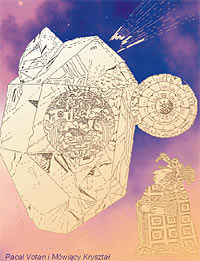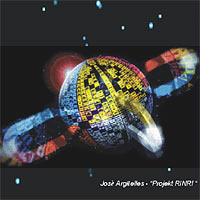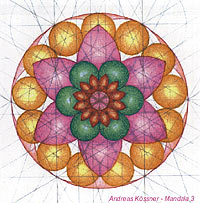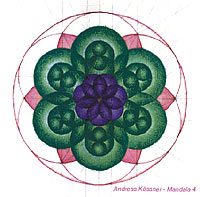|
Who were the Maya ?
 Why has the name of the South American peoples been found to exist on many other continents of the Earth ? Did they choose this name deliberately ? Where did the Maya come from ? Legends have it that the Maya came from far away lands, from the sky or from the depths of the ocean. The Maya have been linked to the Atlantis and even the Pleiades. Why has the name of the South American peoples been found to exist on many other continents of the Earth ? Did they choose this name deliberately ? Where did the Maya come from ? Legends have it that the Maya came from far away lands, from the sky or from the depths of the ocean. The Maya have been linked to the Atlantis and even the Pleiades.
Contemporary anthropology assumes the Maya were a part of the people who at the end of the ice age, some 12000 years ago, crossed the Bering Strait from Asia to America, to populate the area known today as Central America (Mexico, Guatemala, Honduras).
History
 In the first millennium AC (3rd and 4th century AC) the Maya have created an advanced civilization that revolved around such city-centers as Tical, Copan, Uaxactun. Their civilization had greatly influenced the development of the neighboring peoples. At around the 10th century AC for reasons so far unestablished, the Maya have abandoned their settlements and established new city-states such as Chichen Itza, Uxmal and Mayapan in the northern part of the Yucatan. In the times of the rule and hegemony of the rulers of Chichen Itza, the cities established an alliance, which in the 12th century was beginning to be lead by Mayapan. In the 15th century the city was defeated and destroyed by the other rebel cities. The long-term wars have lead to the collapse of the once great civilization. The arrival of the Spanish in South America in the 16th century had lead to the great destruction in the Mayan stateship and culture. In the first millennium AC (3rd and 4th century AC) the Maya have created an advanced civilization that revolved around such city-centers as Tical, Copan, Uaxactun. Their civilization had greatly influenced the development of the neighboring peoples. At around the 10th century AC for reasons so far unestablished, the Maya have abandoned their settlements and established new city-states such as Chichen Itza, Uxmal and Mayapan in the northern part of the Yucatan. In the times of the rule and hegemony of the rulers of Chichen Itza, the cities established an alliance, which in the 12th century was beginning to be lead by Mayapan. In the 15th century the city was defeated and destroyed by the other rebel cities. The long-term wars have lead to the collapse of the once great civilization. The arrival of the Spanish in South America in the 16th century had lead to the great destruction in the Mayan stateship and culture.
City-states
The city-state was ruled and lead by ahau or the king. The particular cities, villages or groups of villages were ruled by sahalob (the governors). They came from the ruling royal families or from the local aristocracy, and also were the captains of the local army.
The Mayan cities were ceremonial and cultural centers; their population was mainly restricted to the religious leaders and the aristocracy, and was not great. Craftsmen and farmers lived on the outskirts of the cities, where settlements and villages would be put up surrounding the cultural centers. The cities were part of a federation or a league of cities.
Social system
The Maya had a class structure. The aristocracy were the highest social class; it gave rise to the rulers, the state administrators and officials, the clergy and the superior army generals. Peasants constituted the largest social strata, with some or most working with crafts. There were tradesmen and other occupational groups in the society. Slaves were the lowest social class, and they were usually recruited from prisoners captured during wars.
Economy
The Mayan economy revolved around agriculture which saw such techniques being used as irrigation, hunting, fishing. The Maya cultivated and grew maze, beans, cotton, cocoa, manioc, sweet potatoes. They traded and exchanged goods with their neighbors and far away centers, they organized fairs. The trade as a channel developed because of the network of roads connecting the cities together. Crafts, and especially ceramics, flourished.
Writing
 The Maya were not a prehistoric population, because they had their own writing system which consisted of syllables and ideograms or graphic symbols which represented specific objects or concepts. The Mayan texts which had been recovered, called the codes, are beautifully illustrated manuscripts outlining their mythology, rituals and astronomical knowledge. The Maya were not a prehistoric population, because they had their own writing system which consisted of syllables and ideograms or graphic symbols which represented specific objects or concepts. The Mayan texts which had been recovered, called the codes, are beautifully illustrated manuscripts outlining their mythology, rituals and astronomical knowledge.
The name 'code' refers to the rectangular-shaped volumes of writings, which were assembled together like a fan, and were painted on both sides. The Maya produced their books from fig tree bark which they beat into a pulp and painted one side with calcium carbonate mixed with water. In this way they obtained a smooth surface, on which they painted colorful signs and symbols. Specific colors always conveyed certain messages i.e. yellow symbolized a woman or a dead person, purple symbolized the royal family, blue symbolized the North, red symbolized the South. The codes were written by professional chronicle writers who, alike bards and musicians, were exempt from paying taxes.
The codes contained, among other things, a chronological account of the history of Mexico, the family trees and the histories of royal family lineages, the books of marriages and births, descriptions of rituals and etiquette, a list of important events such as battles, disasters and conquests. The ritual codes convey their understanding of the universe and the beliefs and the practices of the Maya at the time, all based on the 260-day calendar; they were used as oracles, were used to read the future and the will of gods, showed the best conduct in state affairs and in life. The geographic codes encompass maps which show the locations of the villages and the boundaries of territories as well as the account of the levies the conquered nations were to pay the conquerors.
Four codes are also the best known: The Dresden Code (purchased by the Royal Dresden Library in 1739), The Madrid Code (the first part of it was found in 1866, and the second in 1875, they are currently both on display at the Museo de America in Madrid), the Paris Code (discovered in 1859 among the volumes of works held at the National Library in Paris), and the Grolier Code (dated 1230 AC, displayed at the Grolier Club in New York in 1971).
Achievements of the Maya civilization
 W Compared to other Mesoamerican cultures, the knowledge and the craft of the Maya are unique. The number of cities hidden in the jungles of Guatemala, the temples, the pyramids, the palaces, the terraces, the stone paved ball courts, the wonderful glyphs, hieroglyphs continue to bewilder the world of science. The Maya didn't use any metal tools, they didn't know the wheel, and didn't use animals for labor.
They built their structures without the use of metal, produced their arms from volcanic glass, made their jewelry from jade and stucco, they produced sculptures and glyphs from stone and bones, they knew how to make polychrome ceramics. The paintings and the inscriptions found on the walls of their temples and the stone stellas commemorate the dates of the most important events. W Compared to other Mesoamerican cultures, the knowledge and the craft of the Maya are unique. The number of cities hidden in the jungles of Guatemala, the temples, the pyramids, the palaces, the terraces, the stone paved ball courts, the wonderful glyphs, hieroglyphs continue to bewilder the world of science. The Maya didn't use any metal tools, they didn't know the wheel, and didn't use animals for labor.
They built their structures without the use of metal, produced their arms from volcanic glass, made their jewelry from jade and stucco, they produced sculptures and glyphs from stone and bones, they knew how to make polychrome ceramics. The paintings and the inscriptions found on the walls of their temples and the stone stellas commemorate the dates of the most important events.
Some of them date as far back as 400 million years ! In the Mayan art there was not one fresco that wasn't used to commemorate a date ! Nothing happened by accident, and mathematics was the basis for everything. To the Maya, life had a completely different meaning than to the Europeans. They didn't ascribe attention to the development of technology, and tended to focus on mathematics, astronomy and philosophy. They introduced the concept of zero into algebra and developed a numeric system long before Arab digits were introduced in Europe. They created a numeric system based on the digit 20, which was based on the three symbols representing values (a dot, a bar and a shell).
The Maya conducted astronomic observations, they used a calendar that helped them predict the exact times of solar and lunar eclipses, and what's more they used a calendar which listed the synodic runs, as well as which synchronized the runs of Mercury, Venus, Mars, Jupiter and Saturn. Theirs was the most precise and accurate calendar on Earth, but also the most complicated. The difference in the calculations between the Maya calendar and the most advanced astronomic calculations of today is less than 0.069 of one day per year ! In everyday life the Maya used two calendars: the 365-day HAAB and the 260-day long TZOLKIN.
In the Mayan religion and culture, broad astrological knowledge can be found in addition to a profound understanding of astronomy. The exit point was the birth of the planet Venus. Many Mayan structures were used as observatories to track the rises and the settings of planets, used in turn for astrologic purposes. Cosmic phenomena, the courses that planets run, the spots on the Sun and their effect on the human psyche, the fertility of the human species were of special interest to the Maya. They worshipped the Sun as their highest god, and that is why in the Maya astrology the impact of the Sun and the cyclic nature of the phenomena in the Solar System were essential in importance. The star alignments in the Zodiac were only the backdrop, a sort of a cosmic clockwork.
The greatest mysteries...
 The greatest of mysteries is the sudden rise and the disappearance of the Maya. There exist many hypotheses with regard to why this happened i.e. some believe the cultural centers ceased to exist because of a revolution, a drought or a plague of some sort, or even the lack of a...plough. It is true that the Maya were the only highly advanced civilization with such an underdeveloped agriculture. The Maya burned down the forests to clear the land and then planted crops into ready-made holes in the ground. This sort of an approach quickly made the land completely barren. The times the land needed to be re-forested and cleared were getting longer. The lack of food could be a reason for a mass migration. The greatest of mysteries is the sudden rise and the disappearance of the Maya. There exist many hypotheses with regard to why this happened i.e. some believe the cultural centers ceased to exist because of a revolution, a drought or a plague of some sort, or even the lack of a...plough. It is true that the Maya were the only highly advanced civilization with such an underdeveloped agriculture. The Maya burned down the forests to clear the land and then planted crops into ready-made holes in the ground. This sort of an approach quickly made the land completely barren. The times the land needed to be re-forested and cleared were getting longer. The lack of food could be a reason for a mass migration.
Mythology
 The presence of numerous Christian symbols in the Mayan mythology is dumbfounding: the sign of the cross (the letter T), accounts of the great flood, the similarity between the great prophet Quetzalcoatl (Cuculcan) to Messiah. In the "Popol Vuh", the Mayan sacred writings we read: "One tongue we all had. Where have been lead astray ? [...] One language we all had when we arrived there, at Tulan (the Biblical Tower of Babel). When we arrived at the side of the sea, Quitze-Balam touched it with his stick and a way forward opened, as if there were no sea...(similar to what the Moses was said to have done)".
The Maya also talked about a teacher who's come down from the stars, called Pacal Votan (likened to Christ). He taught them how to use the calendar, how to write, showed them how to grow maze. He was supposed to have founded the city of Palenque. The lid to his sarcophagus displays a sculpture that looks like an astronaut in a space capsule. The presence of numerous Christian symbols in the Mayan mythology is dumbfounding: the sign of the cross (the letter T), accounts of the great flood, the similarity between the great prophet Quetzalcoatl (Cuculcan) to Messiah. In the "Popol Vuh", the Mayan sacred writings we read: "One tongue we all had. Where have been lead astray ? [...] One language we all had when we arrived there, at Tulan (the Biblical Tower of Babel). When we arrived at the side of the sea, Quitze-Balam touched it with his stick and a way forward opened, as if there were no sea...(similar to what the Moses was said to have done)".
The Maya also talked about a teacher who's come down from the stars, called Pacal Votan (likened to Christ). He taught them how to use the calendar, how to write, showed them how to grow maze. He was supposed to have founded the city of Palenque. The lid to his sarcophagus displays a sculpture that looks like an astronaut in a space capsule.
The world of the Maya had many secrets. Perhaps there was a reason for them being the last great civilization on Earth, which lived and vanished almost unnoticed, with its advanced way of thinking remaining hidden for hundreds of years. Maybe now the time has come to really discover the Maya ?
|












